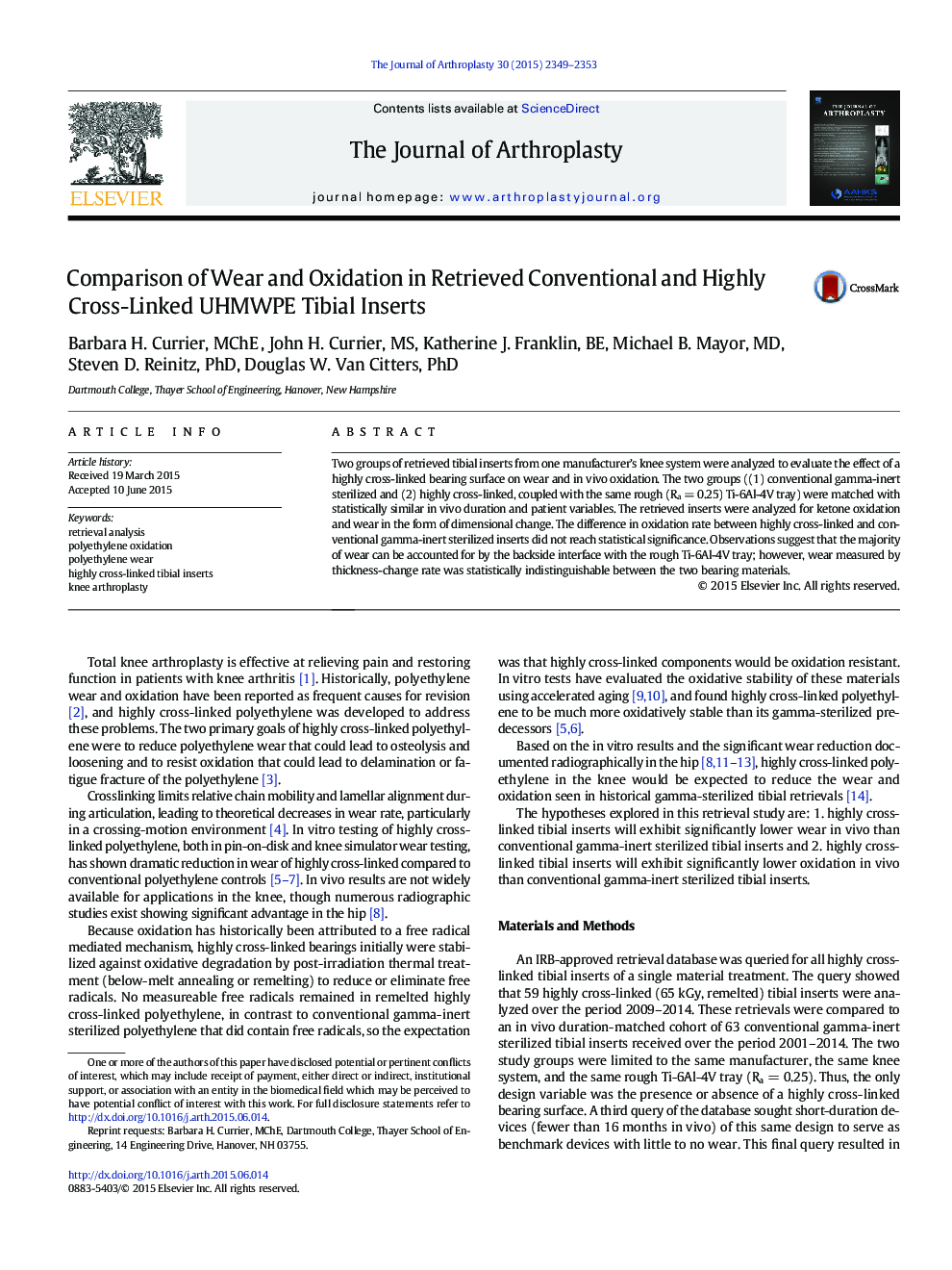| Article ID | Journal | Published Year | Pages | File Type |
|---|---|---|---|---|
| 6209019 | The Journal of Arthroplasty | 2015 | 5 Pages |
Two groups of retrieved tibial inserts from one manufacturer's knee system were analyzed to evaluate the effect of a highly cross-linked bearing surface on wear and in vivo oxidation. The two groups ((1) conventional gamma-inert sterilized and (2) highly cross-linked, coupled with the same rough (Ra = 0.25) Ti-6Al-4V tray) were matched with statistically similar in vivo duration and patient variables. The retrieved inserts were analyzed for ketone oxidation and wear in the form of dimensional change. The difference in oxidation rate between highly cross-linked and conventional gamma-inert sterilized inserts did not reach statistical significance. Observations suggest that the majority of wear can be accounted for by the backside interface with the rough Ti-6Al-4V tray; however, wear measured by thickness-change rate was statistically indistinguishable between the two bearing materials.
